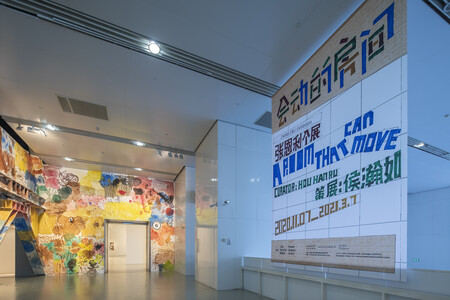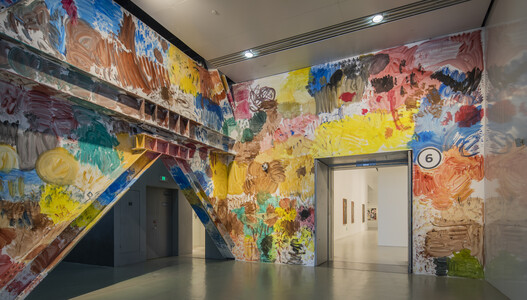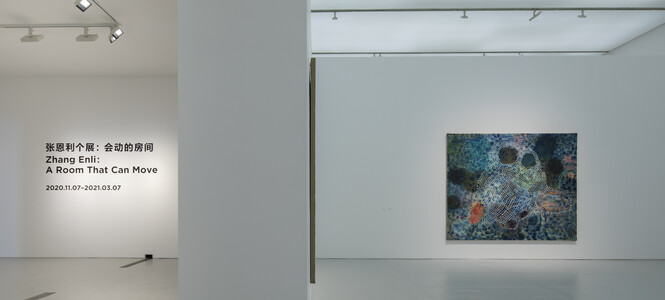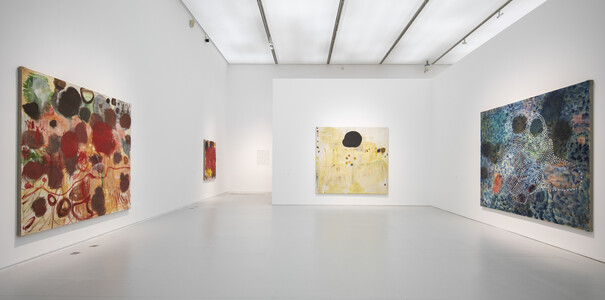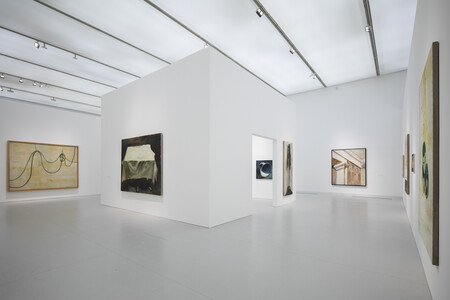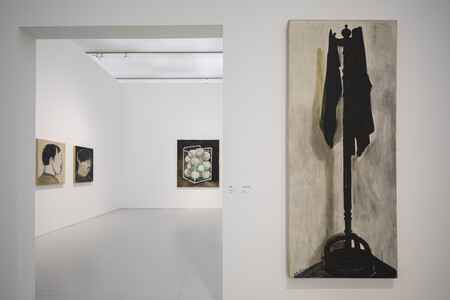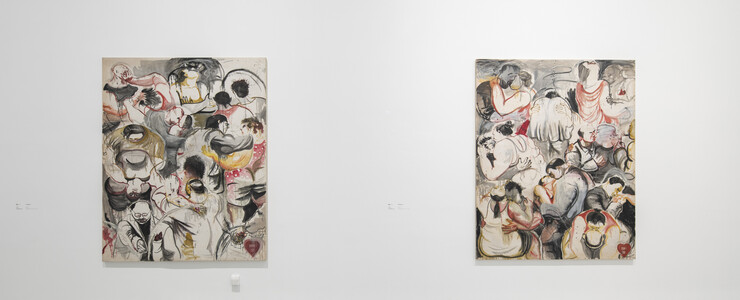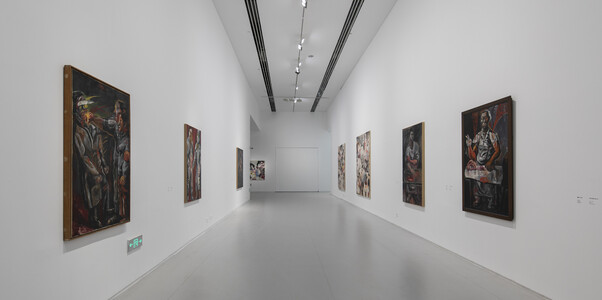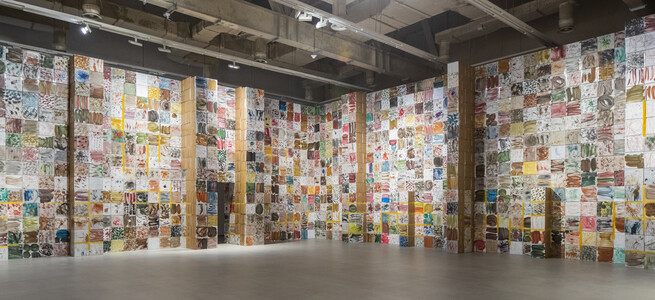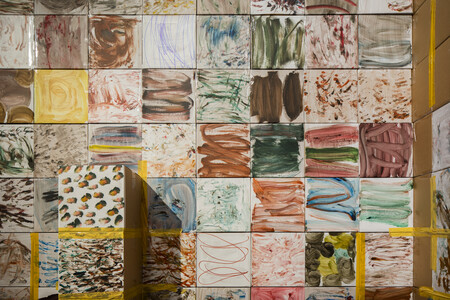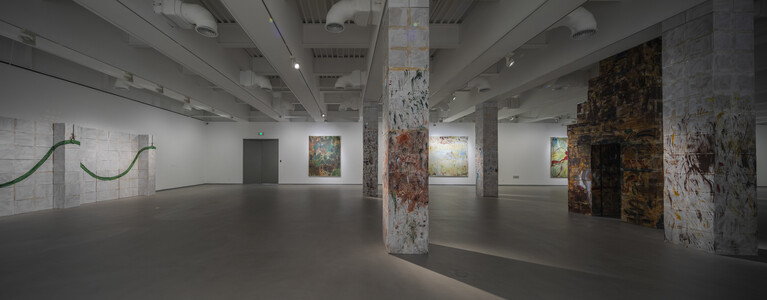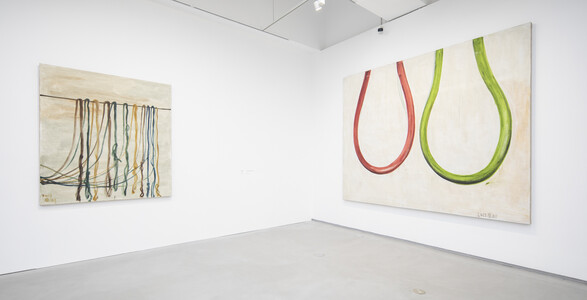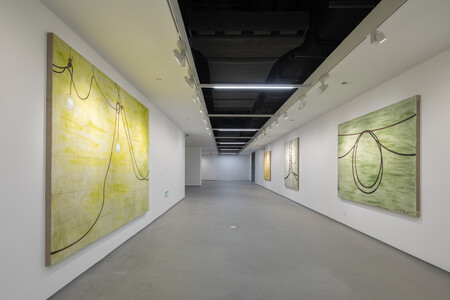Solo Exhibition Power Station of Art, Shanghai
ShanghART Gallery is pleased to announce that Zhang Enli: A Room That Can Move opens on November 7th, 2020, and run through March 7th, 2021 at the Power Station of Art (PSA). Curated by Hou Hanru, the retrospective presents more than one hundred paintings spanning various stages of the artist’s 30-year career, as well as a number of his newly commissioned immersive painting installations (known as “Space Paintings”) for PSA. The exhibition is the largest and most comprehensive solo exhibition to date by Zhang Enli.
The exhibition occupies the third and fifth floors of PSA and its outdoor deck, tracing Zhang Enli’s unceasing efforts in his adventurous painting path since the early 1990s through a non-linear curatorial approach. Zhang Enli’s paintings can be roughly divided into three parts: figurative paintings in the 1990s that focused on ordinary people and issues of their lives; still-life paintings after the millennium, mainly depicting “containers” that trace that passage of time; and more recently, abstract paintings that record memory and explore the subconscious. Since 2007, Zhang Enli started a new path on“Space Painting”, which has been developing in parallel with his paintings on canvas.
1990s – 2000s “Most of the time, we are all meat on the table.”
Zhang Enli was born in Jilin Province, China, in 1965. He studied calligraphy and traditional Chinese ink painting during childhood. In the late 90s, Zhang Enli moved to Shanghai after graduating from university. The city dwellers and their daily lives grabbed his attention, and thus, he brought these social landscapes to the canvas, depicting violence and tension under the rapid urban development of the times. In the Two Jin of Beef and Old Butcher series, Zhang Enli paints portraits of people in everyday life struggling with numbness in gloomy tones and turbulent brushstrokes. In the Pub, Eating, and Intimacy series, Zhang Enli captures people’s social state and psychological transformation in the wake of sudden economic prosperity. Beneath the dramatic tables, the tension-filled narratives, and the emotionally charged faces, there emerges the complex and intertwined human nature of that era.
2000s – 2010s “Watching it is like looking in a mirror, from which you recognize yourself.”
Since 2000, Zhang Enli has gradually developed interests in quotidian objects. This move is rather a freer expansion of his past portraiture to observe the consistent variations of people, society, and the era from another perspective. He often works in thin washes of oil paints, endowing still life with subtle textures and weighty senses of power. His choice of “objects” sometimes comes from everyday life, sometimes from his growth trajectory. The leather pipes represent the codes of city, while the balls are reminiscent of childhood, and the containers, mainly cardboard boxes, are extracted from the subconscious and memory. “Containers” dominate the works of this period. Cardboard boxes, buckets, and utensils are objects that are readily available and frequently used in people’s lives, recording all traces of consumption, survival, and memory. They resemble a mirror; a reflection of people’s identities. Through the subject-object shifting, people soon develop an unfathomable sense of emptiness and addiction. In this way, painting finally comes into reality.
2007s – Now “Why not just paint on the wall?”
The primary purpose of Zhang Enli’s painting practice was to transform everyday objects’ physicality into the materiality of painting. Faced with the mainstream trend of “grand themes” and “technological spectacles,” Zhang Enli decided to abandon the refinement and tedium brought about by an overly mature painting technique and instead shifted his focus to the rudimentary state of life. With direct and swift brushstrokes, he interpreted this gaze by picturing simplicity and authenticity. This need for immediacy drove him to paint directly on to walls, more or less echoing the “primitive style” of ancient frescoes. Since then, these paintings have developed into the “Space Painting” series. In “Space Painting” projects such as the Kochi-Muziris Biennale in India, The Institute of Contemporary Arts in London, Villa Croce in Genoa, and Galleria Borghese in Rome, he has freed himself from the limitations of the frame and painted directly on the walls as well as architectural components of the site. His painting incorporates as well as resists the wall as an overwhelming intervention in space. Sometimes the artist uses hundreds and thousands of cardboard boxes to form a private space, where he can paint spontaneously. In this exhibition, Zhang Enli’s “Space Paintings” experiments with larger scale and newer materials and presents visually shifting images to suggest the concept “A Room That Can Move”.
About the artist
Zhang Enli is a renowned Chinese contemporary artist, born in Jilin Province in 1965. He graduated from the Arts & Design Institute of Wuxi Technical University, China in 1989, and taught at the Arts and Design Institute of Donghua University. Now he lives and works in Shanghai. Zhang Enli’s works have been frequently displayed in major art institutions around the world, including solo shows at Galleria Borghese, Rome, Italy (2019), Firstsite, Colchester, UK (2018), The Institute of Contemporary Arts, London, UK (2013), the Shanghai Art Museum, China (2011), and the Kunsthalle Bern, Switzerland (2009), as well as group shows at the Fondazione Prada, Milan, Italy (2018), Museum of Contemporary Art, Antwerp, Belgium (2018), Centre Georges Pompidou, Paris, France (2016), Contemporary Art Museum PAC Milan, Italy (2015), and the Museum Lembroucke in Germany (2015), amongst many others. Zhang Enli was invited to take part in the 1st Antarctic Biennale (2017), the Gwangju Biennale (2010), the Kochi-Muziris Biennale (2012), the Yokohama Triennale (2014), the Shanghai Biennale (2008), and other international events. His works can be found in the collections of the Musée de Beauregard, Centre Georges Pompidou, Tate Modern, Royal Academy of Arts, M+ Museum, and Shanghai Art Museum.
About the Curator
Hou Hanru is a prolific author and curator based in Rome, Paris and San Francisco. He is currently the Artistic Director of MAXXI (the National Museum of 21st Century Arts and National Museum of Architecture), Rome, Italy.
About PSA
Founded on October 1st, 2012, the Power Station of Art (PSA), whose architecture was renovated from a former power plant, is the first state-run museum dedicated to contemporary art in mainland China, which is also the hosting organization for the Shanghai Biennale. As the “production workshop” of new urban culture, the PSA is striving to provide the public with an open platform for contemporary cultural and art display, to promote cooperation and knowledge production across different cultural and artistic categories.
*The text is sourced from the website of "Power Station of Art"
More Pictures:
绘画的新生:张恩利“会动的房间” | 艺术当代
张恩利 我们要寻找自己的脉络 | 南方人物周刊
张恩利:我关心的始终是人性 | artnet资讯
专访张恩利,用画笔描绘现实,去表达一些超越现实的东西 | IDEAT理想家
张恩利,30年来最大规模个展 再识绘画 | 雅昌艺术网
张恩利:艺术家最怕的事情就是被形式所困 | 凤凰艺术
迷宫、盒子与透明帐篷:张恩利迄今为止最大规模个展“会动的房间”进驻PSA | 99艺术网
Zhang Enli’s Embracing of Space


